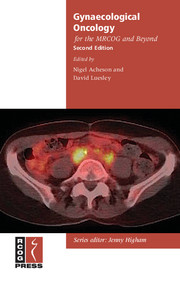Book contents
- Frontmatter
- Contents
- About the authors
- Preface
- Introduction to the second edition
- Abbreviations
- 1 Basic epidemiology
- 2 Basic pathology of gynaecological cancer
- 3 Preinvasive disease of the lower genital tract
- 4 Radiological assessment
- 5 Surgical principles
- 6 Role of laparoscopic surgery
- 7 Radiotherapy: principles and applications
- 8 Chemotherapy: principles and applications
- 9 Ovarian cancer standards of care
- 10 Endometrial cancer standards of care
- 11 Cervical cancer standards of care
- 12 Vulval cancer standards of care
- 13 Uncommon gynaecological cancers
- 14 Palliative care
- 15 Emergencies and treatment-related complications in gynaecological oncology
- Appendix 1 FIGO staging of gynaecological cancers
- Index
13 - Uncommon gynaecological cancers
Published online by Cambridge University Press: 05 August 2014
- Frontmatter
- Contents
- About the authors
- Preface
- Introduction to the second edition
- Abbreviations
- 1 Basic epidemiology
- 2 Basic pathology of gynaecological cancer
- 3 Preinvasive disease of the lower genital tract
- 4 Radiological assessment
- 5 Surgical principles
- 6 Role of laparoscopic surgery
- 7 Radiotherapy: principles and applications
- 8 Chemotherapy: principles and applications
- 9 Ovarian cancer standards of care
- 10 Endometrial cancer standards of care
- 11 Cervical cancer standards of care
- 12 Vulval cancer standards of care
- 13 Uncommon gynaecological cancers
- 14 Palliative care
- 15 Emergencies and treatment-related complications in gynaecological oncology
- Appendix 1 FIGO staging of gynaecological cancers
- Index
Summary
Introduction
The investigation and management of uncommon gynaecological cancers is based mainly upon cohort studies, case series and expert opinion. The evidence base is weak, with few randomised controlled trials available to guide the treatment of these tumours, due to their rarity. However, the management of gestational trophoblastic disease is more robust, as randomised controlled trials have been undertaken and treatment modified accordingly.
Gestational trophoblastic disease
Gestational trophoblastic disease (GTD) is defined as an excessive and inappropriate proliferation of the trophoblast. It includes a spectrum of disease from the benign hydatidiform mole (complete and partial), to the malignant gestational trophoblastic tumour (GTT): invasive mole, choriocarcinoma and the rare placental site trophoblastic tumour (PSTT).
Complete moles occur in about 1/1000 pregnancies and partial hydatidiform moles in 3/1000 pregnancies. Complete moles lack identifiable embryonic or fetal tissue and usually have a diploid 46XX karyotype, with entirely paternal chromosomes. Partial hydatidiform moles have identifiable embryonic or fetal tissue and usually have a triploid karyotype (69 chromosomes), with an extra haploid set of paternal chromosomes. The risk of developing malignant disease after suction evacuation of a complete mole is 15% (with metastases in 4%) and 2–4% after evacuation of a partial hydatidiform mole. The malignant tumour is usually an invasive mole but choriocarcinoma can arise in up to 3% of complete moles and, rarely, after a partial hydatidiform mole. Invasive moles invade the myometrium and are characterised by trophoblastic hyperplasia and the persistence of placental villous structures.
Keywords
- Type
- Chapter
- Information
- Gynaecological Oncology for the MRCOG and Beyond , pp. 189 - 208Publisher: Cambridge University PressPrint publication year: 2011



